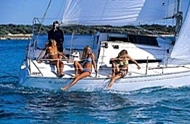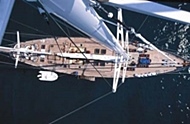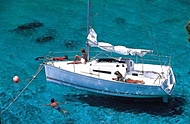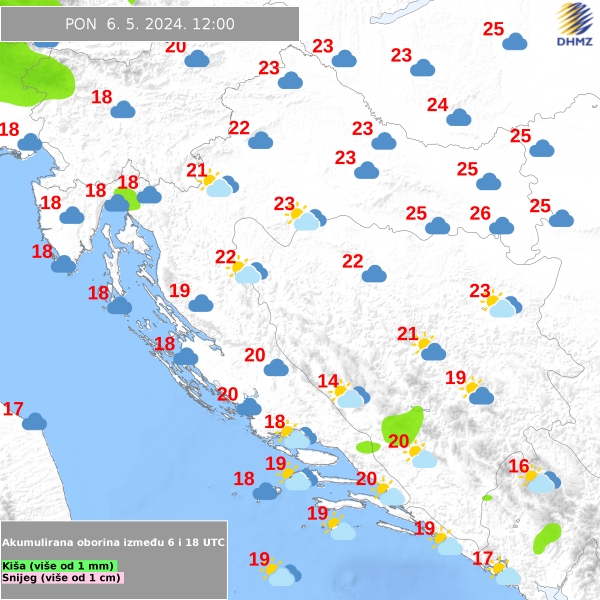What to see in Brac
Vidova Gora (Vidova mountain)
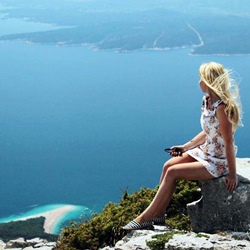
The highest peak of Adriatic arhipelago (780m).
The hiking trail from Gospa Karmelska in Bol lasts for 2 hours, but meny prefer road path (18km): Supetar - Nerežišća - Knežeravan (with sheperd stops - specially recommended to see the one in Gažul) - Vidova Gora.
This path alows you to see all varietes of Brac nature with endemic types of black boron trees.
The mountain got its name by the ruins of church St. Vido, which is 100m from the top. The church is named by the ancient Slavic cult of Slavic god Svetovid.
The Panorama from Vidova Gora is something not to be missed during visit to Brac island.
Deep down you can see the golden finger of Veli rat, the series of Brac bays, and on the other side is the northern side of Hvar island, peninsula Pelješac, Korcula, Vis, all the way to Jabuka. During specially clear days, Monte Gargano on Apenini (Italy) can be seen.
Pustinja Blaca (Monastery Desert Blaca)
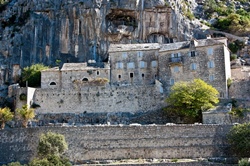
Pustinja Blaca, once famous desert of monks, and later observatory, is situated on the east part of the valley on the south side of Brac island, between Bol and Milna.
Easy aproach is possible trough the wide road from Blato bay or by footpath from the middle of the island trough Nerezisca, Zurmo (old christian watering place for horses and mules), and Dragovode (with houses of old Brac sheperds).
In the cave called Ljubitovica in the steep valley on the south side in 1551., 2 priests from Poljica have established an place which soon evolved in to the desert monastery. Among 11000 books in monastery library, most of them are written before 1800. and the archive shows that trough generations data was collected carefully including economics and everyday field work, the beggining of plant growth, harvesting, climate changes etc.
Blaca has preserved its inventory, today presented in the museum. Particulary valuable is the astronomical legacy of the last Blace desertman (priest) don Niko Miličević.
Skrip
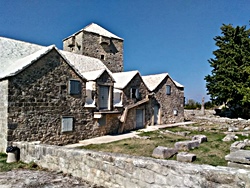
Skrip is the oldest settlement on the Island of Brac (the name is latin "scrupus" = sharp large stone).
Under the settlement there are well known quarries Plate, Strazisce and Rasohe where the stone was collected for the Salona and Diocletian palace, with the protection from Heraklo. There were also masonry workshops there from the later antic times which distributed characteristic sarchophagus from Ravenna to Akvilej..
From Skrip quarries ther was black marble collected and church furniture was made throughout Dalmatia. There were big blocks lifted and transferred to the port of Splitska where still in these days, monumental blocks can be seen as leftowers which fell to the sea. Around the picturesque castle of Radojkovic (there is a museum of Brac with archeological findings of Brac tools), there are good remains of walls which surrounded Iliric settlement (8000 m2 area).
The founding od Mikenic ceramic opens the possibility of Greek colonization, and lot of churches and basilics make a Skrip unique place which gives us insight in all historical ages and thousands of years of life continuity on Brac.
Brac nightlife
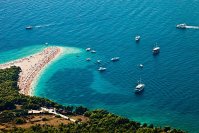
The third- biggest island in Croatia, the nearest to Split and just opposite to Island of Hvar, is island Brac.
On this island you will find something for all tastes: parties, concerts of classical and pop music, art and photo exhibitions, or just an relaxing holiday by the sea.
Bol
As the most known place is Bol, very popular surfing center including a rich offer of other sport activities. Bol is a vibrant little town, blessed by Croatia's most spectacular beach "Zlatni Rat", 600m long pebbly peninsula. In the summer "Zlatni Rat" gets crowded (but still manageable) with sunbathers from all over the world and offers a lot of entertainment and activities.
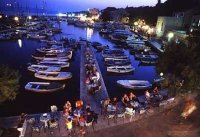
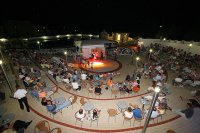
The "Faces" has a open area terrace with a big dance floor, attractive programme during the summer, lot's of performances by famous musicians, DJs and fashion shows. Other popular place is Night Club in Hotel Elaphusa that is open till morning.
Supetar
has been described as holding some of Croatia’s best hidden beaches. There are numerous small bays and coves along the Supetar coastline that are perfect for swimming, water sports or simply relaxing in the sun.
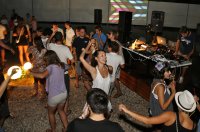
During the summer, nightlife in Supetar is very interesting. All generations will find something for themselves. There are many exhibitions, acapela singers, bars and restaurants.
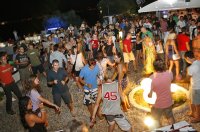
Lively bars, excellent restaurants and very late night dance venues are all available here.
The most popular are "Havana", "Paparazzo", "Roso", "Benji" and "Thriller" bar.
Island of Brac climate and nature
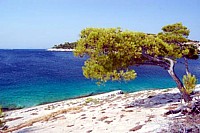
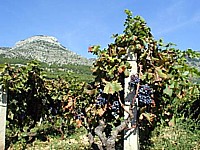
Dense forests of holm-oak, black pine, common oak, hornbeam and Montpelier maple protected the soil from erosion in the past. Holm-oak was cut and exported to Split and Italy, as an excellent fuel.

More than 130 species of birds live on the island, spending winter or summer or flying down in passing. Among domestic animals, the goat has been the symbol of the island from ancient times, and also the sheep.
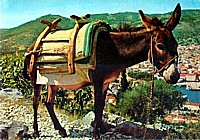
Among snakes, the best known is the ashen horned viper (Vipera ammodytes) with a small horn on the nose and with two poisonous teeth. It can be recognized also by its zigzag dark marking on its back. It attacks very rarely, only when it feels danger.
Brac island gastronomy
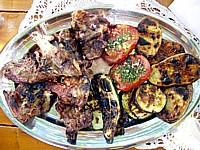
The Brac lambs that have not yet tasted grass, only their mother's milk are well known from ancient times; vitalac is particularly appreciated by gourmets - lamb' s offal (liver, milt, heart, lungs) skewered and wrapped in lamb's sheath.

Vitalac is then cut and eaten while the diners wait for the whole lamb to be baked. Another speciality is butalac - stuffed lamb's leg rubbed down with scented grass and splashed with wine or prosecco; also janjeci tingul (stewed lamb), lamb in "teca" (saucepan) and cooked.








